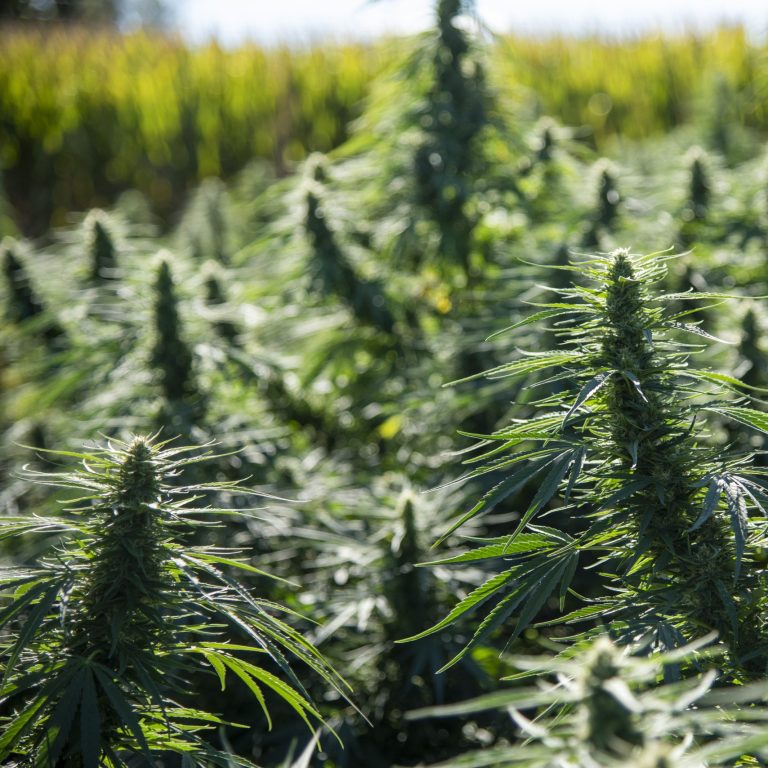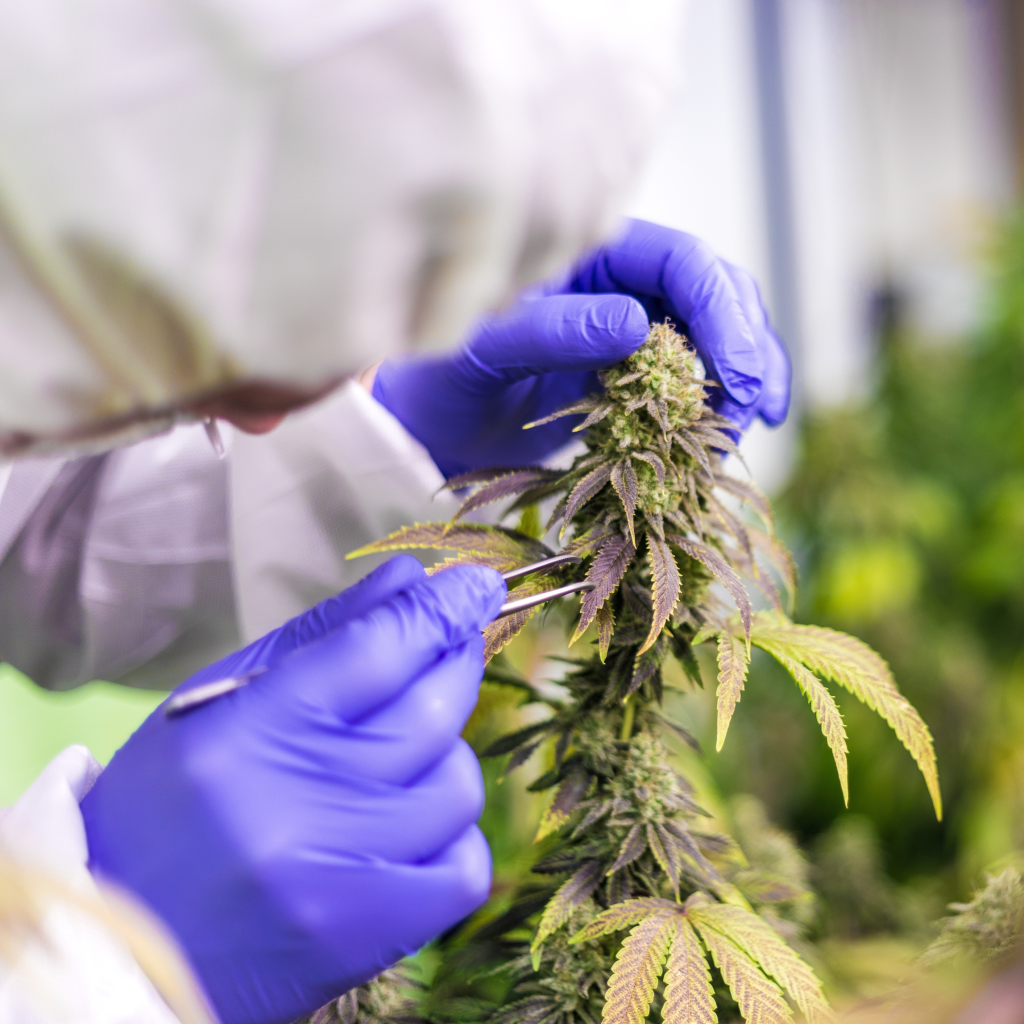
Canna-culture classifies strains as indica or sativa, but this dictation has centuries-old roots that don’t reflect what you find in modern-day dispensaries.
Back in the 18th century, farmers divided cannabis into two categories based on physical appearance. This classification remains popular today among growers, sellers, and consumers, despite being proven inaccurate by biologists.

French Botany and Cannabis
The indica and sativa classifications we know today come from Jean-Baptiste Pierre Antoine de Monet, Lamarck for short, a French biologist and naturalist with an affinity for botany who lived from August 1744 – December 1829.
Through Lamarck’s observations, we adopted the use of indica and sativa when describing cannabis, based on his notes that indica plants are short and firm with thick stems, while sativa plants grow tall with feather-thin leaves. Lamarck hypothesized that based on different physical traits, they must have different therapeutic uses.
Other botanists disputed this hypothesis, saying the only breed of cannabis is cannabis sativa L, which can adapt its physical traits while remaining molecularly uniform.
Once medical professionals became interested in the healing properties of cannabis, they used “indica” and “sativa” to make the plant more approachable to the mainstream market riddled with reefer madness hysteria.
Why Do Cannabis Strains Vary?
Some natural factors for cannabis variety include:
- Temperature
- Humidity
- Soil nutrients
- Sunlight
- Altitude
The plant’s environment determines the terpene profile, which is what gives the cannabis plant its unique chemical blueprint.

Hybrid Cannabis
Although growers began with good intentions, through cross-breeding to achieve the perfect strain, cannabis lost its chemical makeup that makes something a true indica or true sativa. So maybe; Lamarck was right all along, but cannabis was hybridized faster than studies on the plant could be concluded.
Therefore, the distinction between Indica and Sativa is not always clear, and many strains have been hybridized over time. With this hybridization it’s becoming less common to find pure indica and sativa strains. Additionally, the way a plant is grown and the way it’s consumed can also influence the effect.
This is why you can’t go off of a strain or a name, you must look at cannabis from the eyes of a medical expert, or even botanist, and weigh in the growing conditions and terpene profile.
That said, let’s look at the two main subspecies of cannabis and their properties to better understand the effects of hybrid varieties that are dominant in one or the other.

What is Indica?
Indica is a subspecies of the cannabis plant that can induce relaxation and sedation. Indica strains usually have higher levels of CBD, a non-psychoactive compound.
Known for its calming, relaxing effects, indicas are a popular choice for those battling insomnia and anxiety.
The effects of indica strains are often described as “body,” meaning that they can produce a deep and relaxing physical sensation that can help to reduce pain, muscle tension, and anxiety. Also known for their sedating effects, indica strains can help promote sleep and relaxation.
Indica strains are commonly used to treat various medical conditions, such as:
- Chronic pain
- Insomnia
- Muscle spasms
- Stress
What is Sativa?
Sativa strains are typically, but not always, known for their energizing and uplifting effects and are commonly used during the day. Sativas can stimulate creativity, improve focus, and uplift mood. They are popular among people who want to experience the psychoactive effects of cannabis without feeling sedated or “couch-locked.”
The effects of sativa strains are often described as “cerebral,” meaning that they can produce a strong, uplifting, and energizing high that can stimulate creativity, focus, and sociability. Sativa strains can also help to reduce feelings of stress, anxiety, and depression.
Sativa strains are commonly used to treat various medical conditions, such as:
- Chronic fatigue
- Depression
- Headaches and migraines
- Lack of appetite
- Stress
Telling the Difference between an Indica and Sativa Plant
Indica plants are shorter and bushier than sativa plants, with wide, dark green leaves and dense buds. Typically, they have a shorter flowering time (around 6-8 weeks) and are well-suited for indoor cultivation.
Sativa cannabis grows tall and narrow, with thin, long leaves and thinner buds.
Examples of Indica Dominant Cannabis Strains
Afghan Kush: This strain is known for its strong, sedating effects and its earthy, musky aroma. It is often used to treat chronic pain and insomnia.
Granddaddy Purple: This strain is known for its deep, relaxing effects and its sweet, fruity aroma. It is often used to treat anxiety and stress.
Bubba Kush: This strain is known for its heavy, sedating effects and its earthy, chocolate aroma. It is often used to treat chronic pain and insomnia.
Northern Lights: This strain is known for its relaxing and sedating effects, and its earthy, sweet aroma. It is often used to treat anxiety and insomnia.
Blue Cheese: This strain is known for its relaxing and sedating effects, and its pungent, cheesy aroma. It is often used to treat anxiety and insomnia.
Examples of Sativa Dominant Cannabis Strains
Durban Poison: This strain is known for its energizing and uplifting effects and its sweet, earthy aroma. It is often used to treat fatigue and depression.
Jack Herer: This strain is known for its cerebral and energizing effects and its piney, woody aroma. It is often used to stimulate creativity and focus.
Green Crack: This strain is known for its energizing and uplifting effects and its sweet, fruity aroma. It is often used to treat fatigue and depression.
Sour Diesel: This strain is known for its energizing and uplifting effects and its diesel-like aroma. It is often used to stimulate creativity and focus.
Lemon Haze: This strain is known for its energizing and uplifting effects and its lemon-like aroma. It is often used to stimulate creativity and focus.
We’re Here to Help Demystify Cannabis Strains
The effects of cannabis can be complex and depend on many factors, including the specific strain, the method of consumption, and the individual’s own physiology and environment. Before consuming any cannabis product, it’s important to consult with a professional and check the lab test results of the specific strain you’re getting so you know its cannabinoid and terpene profile.
At Hempfield Botanicals, we now know better than to classify cannabis as simply “indica” or “sativa,” and we are dedicated to educating others about what makes each strain unique. Through our cannabis concierge services, we take a look at the strain-specific terpenes and determine how they will affect your specific health concerns.
Contact us about scheduling a consultation with Heather Kreider, a Registered Nurse, certified in Advanced Cannabis Training, and PA Dispensary Agent Certified for assistance in navigating the process of obtaining a PA medical marijuana card and guidance for using MMJ effectively. She can even accompany MMJ cardholders to dispensaries, helping them choose strains and administration methods that will yield optimal results for their condition. In addition, she can act as a designated caregiver and make dispensary visits on a patient’s behalf, legally picking up medicine at an approved dispensary for home delivery.
